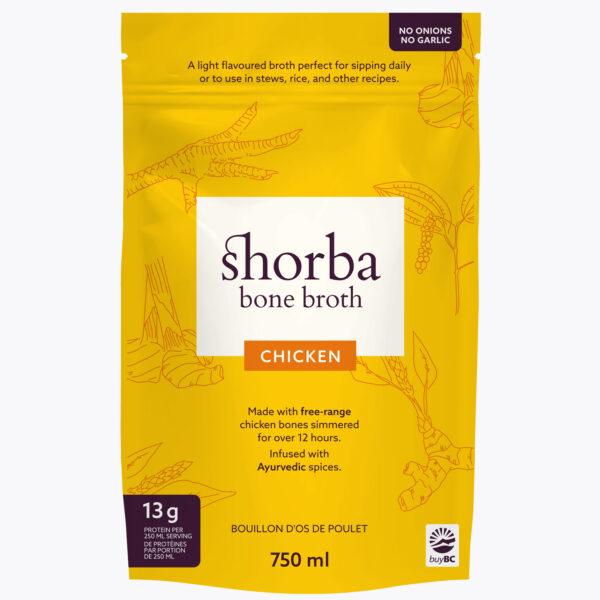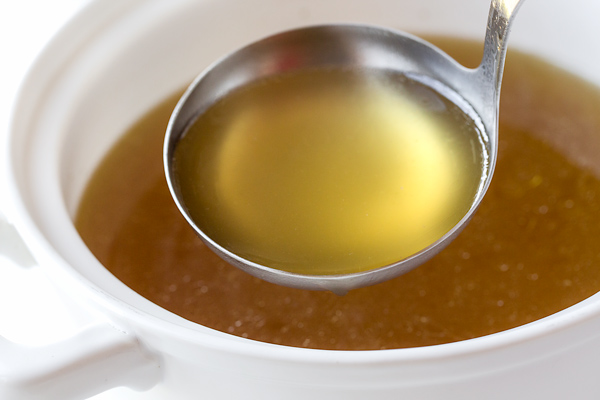Pantry Planning: The Smart Way to Store Beef Broth
Pantry Planning: The Smart Way to Store Beef Broth
Blog Article
The Ultimate Guide to Taking Pleasure In and making Organic Bone Broths at Home
Bone brew has actually gotten attention for its various health advantages and cooking flexibility. Crafting organic bone broth at home permits people to regulate the quality of components, making sure a nutritious end result. Understanding the choice of bones, essential flavor elements, and proper cooking techniques is important. As the process unravels, one might ask yourself exactly how to raise their broth beyond the basics and integrate it right into day-to-day meals for enhanced taste and nutrition.
Understanding the Health Perks of Bone Broth
Bone brew has been a staple in various cuisines for centuries, its health advantages have obtained significant focus in recent years. Rich in collagen, amino acids, and minerals, bone broth is commonly touted for its prospective to sustain joint health and wellness, boost gut function, and improve skin flexibility. The gelatin obtained from prepared bones might help food digestion and help seal the intestine cellular lining, potentially easing problems like leaking digestive tract syndrome.Furthermore, the existence of nutrients such as glucosamine and chondroitin might add to minimized swelling and pain alleviation in joints. In addition, bone brew is moistening and can work as a nutritious base for soups and stews. Several proponents also declare that it increases the body immune system, many thanks to its mineral account. On the whole, the resurgence of interest in bone broth is linked to its viewed ability to advertise overall well-being and support various bodily functions.
Picking the Right Bones for Optimum Flavor and Nutrition
What aspects should one consider when selecting bones for broth preparation? The sort of bones used substantially impacts both flavor and nutritional worth. It is crucial to pick bones that consist of a mix of marrow bones, joint bones, and meaty bones. Marrow bones provide healthy and balanced fats and abundant flavors, while joint bones add collagen, boosting the brew's dietary profile.Additionally, sourcing bones from pasture-raised or grass-fed animals guarantees higher high quality and more nutrients, as these pets are commonly healthier. The freshness of the bones is likewise important; choosing bones from local butchers or farmers' markets can guarantee suitable flavor. Bone dimension matters as well; bigger bones launch even more gelatin, leading to a richer brew. Ultimately, taking into consideration the kind of animal-- chicken, fish, or beef-- can affect the final taste, enabling functional brew alternatives tailored to private choices.
Important Active Ingredients for a Delicious Bone Brew

Quality Bone Option
The structure of a flavorful bone brew exists in the cautious choice of top notch bones. Sourcing organic, pasture-raised or grass-fed bones is necessary, as these options are more probable to be devoid of harmful additives and supply premium nutrients. Ranges such as poultry, beef, or lamb bones each give unique flavors and wellness advantages. Bone kinds, consisting of marrow bones, knuckle bones, and oxtails, add gelatin and collagen, boosting the broth's appearance. Selecting bones with a mix of meat and connective tissue can also include richness and depth. Additionally, choosing bones with visible marrow ensures a nutrient-dense brew, raising the overall high quality. Eventually, spending time in quality bone option lays the foundation for a beneficial and delicious brew.
Aromatic Taste Enhancers
Selecting premium bones establishes the stage for a rich and nutritious bone brew, yet it is the addition of fragrant flavor enhancers that truly boosts the meal. Active ingredients such as onions, garlic, and carrots not only impart sweet taste but likewise add deepness to the brew. Fresh natural herbs like bay, parsley, and thyme leaves add a great smelling note, while flavors such as black peppercorns and cloves present heat and complexity. In addition, integrating a splash of apple cider vinegar can assist essence minerals from the bones, enriching the brew. These taste boosters create an unified mix, changing an easy brew into a mouthwatering foundation for sauces, soups, or stews, making it a functional element in any type of culinary repertoire.
Step-by-Step Guide to Making Bone Broth in the house
Producing bone broth in the go to the website house can be a satisfying cooking undertaking that improves both taste and nutrition in various dishes. To begin, one should select premium bones, ideally from grass-fed or natural resources. Toasting the bones at 400 ° F for about half an hour can increase the flavor. Next, move the baked bones to a large pot or slow cooker and cover them with cool water. Including a sprinkle of vinegar helps remove minerals from the bones.Include aromatic vegetables like onions, carrots, and celery for included deepness, together with natural herbs and seasonings as desired. Bring the mixture to a boil, after that lower to a simmer. It is essential to let the broth simmer for a minimum of 12 hours, though longer is better for maximum richness. Lastly, pressure the brew with a fine-mesh sieve and shop it in closed containers, all set to raise meals with its nourishing essence.

Tips for Perfecting Your Bone Broth Simmer
While simmering bone brew, maintaining the ideal temperature and timing is crucial for accomplishing a savory and abundant result. A gentle simmer, preferably between 190 ° F and 210 ° F, helps essence maximum nutrients and flavors without steaming, which can make the brew cloudy. It is recommended to monitor the pot closely, adjusting the warmth as essential to keep this simmer.Timing is additionally vital; a longer simmer, commonly ranging from 12 to 48 hours, allows for much deeper flavor removal and collagen launch. For hen bones, a 12 to 24-hour simmer suffices, while beef bones take advantage of longer food preparation times.Additionally, skimming any type of foam or pollutants that rise to the surface area throughout the first few hours can boost the brew's clarity and taste. Making sure the pot is covered during simmering aids to keep wetness and intensify the flavors, making for a much more rewarding end product.
Imaginative Ways to Use Bone Broth in Your Cooking
Including bone broth right into various meals boosts both flavor and dietary worth. Cooks and home cooks alike locate that using bone broth as a base for soups and stews improves depth and richness, changing simple recipes into passionate meals. It can likewise be utilized in risottos, where the brew changes water, permitting the grains to absorb its tasty essence.Additionally, bone broth functions as an excellent cooking liquid for grains like quinoa or rice, infusing them with nutrients and taste. For an included twist, it can be made use of in braising meats, leading to tender, savory results. Even sauces profit from a sprinkle of bone broth, enhancing their preference profile.Moreover, bone broth can be incorporated right into smoothie mixes for an unexpected health boost, giving protein and nutrients without endangering preference. These innovative applications showcase the adaptability of bone brew in day-to-day cooking, making it a very useful kitchen area staple.
Keeping and Preserving Your Home Made Bone Brew
Correct storage space and preservation of homemade bone brew is vital for preserving its taste and dietary advantages. Cold strategies and refrigeration finest techniques play a vital function in expanding the broth's rack life. Recognizing these techniques can aid ensure that the brew continues to be delicious and secure for future use.

Freezing Methods Discussed
Freezing methods are vital for successfully keeping and protecting self-made bone brew, guaranteeing its rich tastes and nutrients continue to be intact for future usage. To freeze bone brew, it is suggested to let it awesome totally before transferring it to storage containers. Glass containers, silicone molds, or sturdy fridge freezer bags appropriate choices. When making use of jars, leave space on top for development during cold. Portioning the broth right into smaller amounts enables simple thawing and decreases waste. Label containers with the day and contents for simple recognition. For peak high quality, consume the frozen brew within 3 to 6 months - Benefits Of Bone Broth. Thawing can be carried out in the refrigerator or by making use of a microwave, making certain that the broth is heated thoroughly prior to consumption
Refrigeration Best Practices
While lots of concentrate on freezing as a technique of preservation, refrigeration also plays a vital role in saving homemade bone broth effectively. When cooled, bone read here brew must be moved to impermeable containers, ensuring marginal air direct exposure to avoid spoilage. It is advisable to cool brew within 2 hours of food preparation to preserve its high quality. Commonly, homemade bone broth can be stored in the refrigerator for approximately five days. Labeling containers with days can assist track quality. For peak flavor and safety and security, brew should be reheated to a rolling boil before usage. If longer storage is needed, freezing continues to be an exceptional choice, but correct refrigeration methods assure that bone brew remains nutritious and delicious for temporary usage.
Regularly Asked Inquiries
Can I Use Frozen Bones for Making Bone Broth?
The question of using icy bones for bone brew emerges often (Beef Broth). Professionals agree that frozen bones can be utilized efficiently, yet they should be thawed before food preparation to ensure perfect flavor and nutrient extraction
Just How Long Can I Shop Homemade Bone Brew?

Is It Safe to Reheat Bone Broth Several Times?
Reheating bone broth several times can present safety concerns - Bone Broth Delivery. Each reheating cycle increases the threat of microbial growth. It is suggested to reheat just once and keep websites any kind of leftovers quickly to guarantee security and top quality
Can I Include Veggies to the Broth for Flavor?
Adding vegetables to broth enhances taste and nutritional value. Typical choices consist of carrots, onions, and celery. The vegetables instill their significance into the broth, creating a richer and much more savory final item.
What's the most effective Method to Thaw Icy Bone Brew?
To defrost frozen bone brew, one can place it in the fridge overnight, make use of a microwave on low warm, or immerse the secured container in warm water, making sure also thawing without jeopardizing taste or nutrients. It is important to choose bones that consist of a mix of marrow bones, joint bones, and meaty bones. Marrow bones provide healthy and balanced fats and rich flavors, while joint bones contribute collagen, improving the brew's dietary profile.Additionally, sourcing bones from pasture-raised or grass-fed pets guarantees greater high quality and more nutrients, as these pets are commonly healthier. Bone types, including marrow bones, knuckle bones, and oxtails, add jelly and collagen, boosting the broth's texture. Picking top quality bones sets the stage for a healthy and rich bone brew, however it is the enhancement of fragrant taste boosters that absolutely boosts the dish. Also sauces profit from a splash of bone broth, enriching their taste profile.Moreover, bone brew can be integrated into shakes for an unexpected health boost, giving protein and nutrients without compromising preference.
Report this page